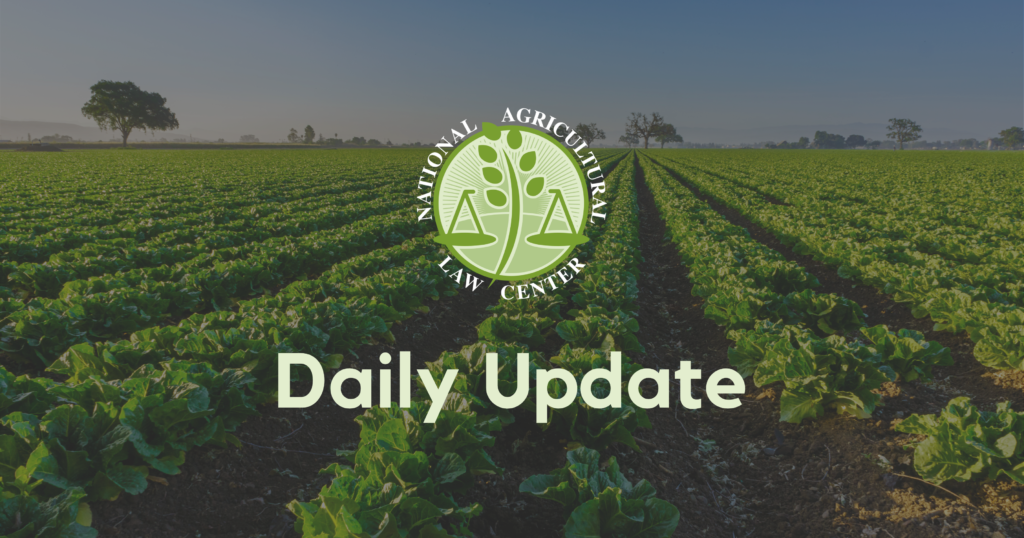A comprehensive summary of today’s judicial, legislative, and regulatory developments in agriculture and food. Email important additions HERE.
JUDICIAL: Includes Wisconsin state law, Clean Water Act
In Clean Wisconsin, Inc. v. Wisconsin Dep’t of Nat. Res., 2021 WI 71 (Wis. 2021), the Supreme Court of Wisconsin considered whether the Wisconsin Department of Natural Resources (“DNR”) had the authority to impose an animal unit maximum condition and an off-site groundwater monitoring condition in a Wisconsin Pollutant Discharge Elimination System (“WPDES”) permit it issued to a Wisconsin farm for its concentrated animal feeding operation (“CAFO”). Ultimately, the Wisconsin Supreme Court found that DNR did have such authority. This lawsuit arises from a WPDES permit granted to a Wisconsin CAFO in 2012. The original permit did not contain either a condition imposing an animal unit maximum or a condition requiring groundwater monitoring. The plaintiffs originally petitioned DNR to add those conditions, and had that petition heard by an administrative law judge (“ALJ”) who concluded that the conditions should be added to the permit. There was a question among the various parties involved in the dispute as to whether DNR had the authority to add the conditions ordered by the ALJ. The plaintiffs petitioned the court to take up the issue.
Under Wisconsin law, no agency may implement or enforce any standard unless it is “explicitly required” by Wisconsin state law. Here, the Wisconsin CAFO argued that “explicitly required” means that in order to DNR to impose a condition in a WPDES permit, that condition must be listed verbatim in a state statute or regulation. In contrast, the plaintiffs argued that such a reading of “explicitly required” is too narrow, and that Wisconsin law has given DNR a broad authority to impose conditions in WPDES permits. After reviewing the law, the Wisconsin Supreme Court agreed with the plaintiffs that DNR could impose both conditions because Wisconsin law granted DNR the authority to set conditions that would help meet effluent limitations and protect groundwater. The animal unit maximum condition was designed to ensure compliance with effluent limitations, and the groundwater monitoring condition was designed to ensure compliance with groundwater protection standards. Therefore, DNR has the authority to issue both conditions.
REGULATORY: EPA, FWS, NOAA
Environmental Protection Agency
Notice that EPA is seeking public comment on a April 8, 2021 petition from the Center for Biological Diversity requesting that the Agency cancel the registration of insecticide product PNR1427, more commonly known by its brand name Seresto (EPA Registration No. 11556-155), pursuant to FIFRA, and pending such requested cancellation, to suspend Seresto’s registration pursuant to FIFRA. Info here.
Fish and Wildlife Service
Notice announcing the availability of our draft revised recovery plan for the Gila trout, listed as threatened under the Endangered Species Act. Info here.
National Oceanic and Atmospheric Administration
Proposed rule to approve and implement Framework Adjustment 62 for Whiting, Red Hake, and Offshore Hake to the Northeast Multispecies Fishery Management Plan. Info here.
Temporary rule prohibiting retention of Pacific cod by catcher/processors using trawl gear in the Central Regulatory Area of the Gulf of Alaska. Info here.
